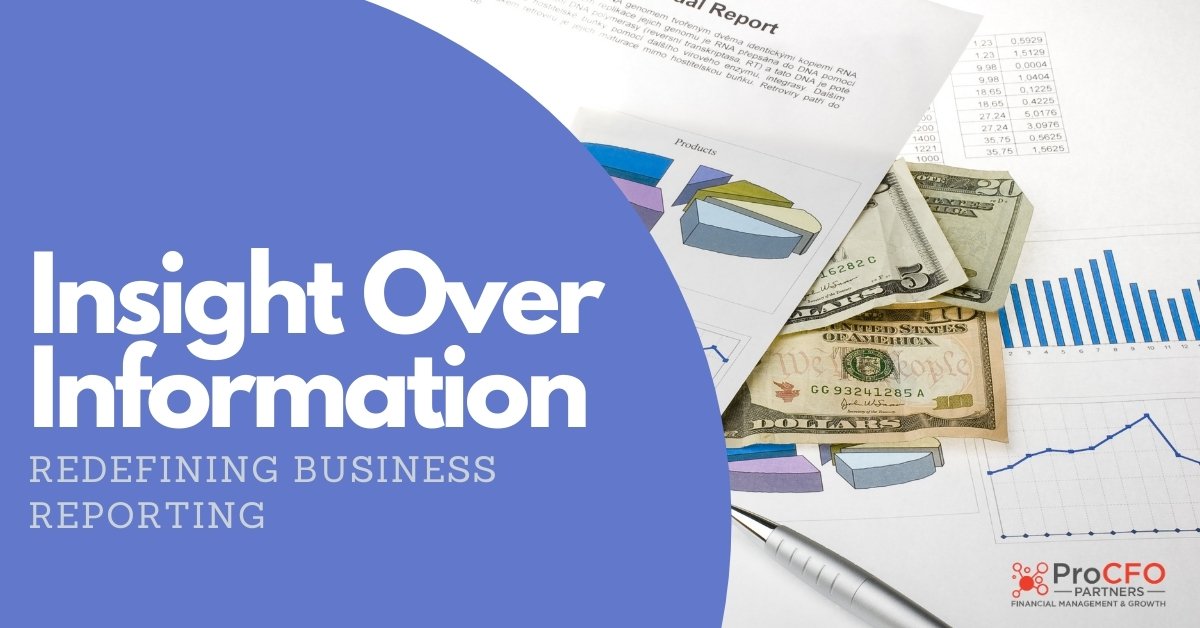Insight Over Information: Redefining Essentials of Good Business Reporting
Sep 3, 2020
Running, managing, and growing a business takes information and insight. Most companies are overwhelmed with information and sometimes entirely lacking insight. The value of reporting isn’t in the reports themselves – it’s in the analysis of what the reporting is, and is not, telling you.
The Essential Business Reports
The fundamentals of business reporting includes an income statement, balance sheet, and statement of cash flows. But reporting really is the fundamentals around where you get information from the business to help you make decisions about how to move the business forward. This can include reports for key performance indicators (KPI’s) and benchmark from the past to help drive forecasting.
Forecasting vs Budgeting
Most organizations establish a budget, which is important to define what you intend to spend when, where, and how, as established by an expected income. Forecasting is less understood in many organizations, and more significantly involves timing. For instance, according to your budget you may have spent less in hiring last month than anticipated, so the thinking is you have that surplus in savings. If you postpone that hire for a few more months, your reporting will reflect that savings according to what you budgeted. But maybe you’ve decided to postpone the hire for a few months because you’re going to invest in a higher level hire than originally anticipated, or you’ll be hiring two people instead of one. When you factor these into forecasts, you establish where the “savings” you had to date will ultimately be spent.
Measuring What Matters
Back to the fundamentals – income statement, balance sheet, and statement of cash flows. Many businesses over-rely on the income statement and under-rely on the statement of cash flows. An income statement can report that as revenues grow, profits grow. And as the business grows, you’ll use more and more cash to invest in people, processes, systems, and other components that help support growth. An imbalance in reliance on income statements vs cash flows can leave leaders surprised and frustrated when, even as a business is growing, it has to borrow money to manage cash flow.
This speaks to the important of measuring what matters in your business. Business leaders need to know what’s important to measure in their company and why. This requires a comprehensive approach to knowing business drivers and what their metrics mean to the business. Herein is the value of insight on information.
Insight on the Information: Putting It All Together
A pile of reports or a dozen views on a dashboard can be a confusing data-dump masking as deep insight. Measuring what matters requires analysis to create context on what the numbers mean. For instance if you don’t understand why there’s a variance on a revenue line or an expense line, you can examine printouts of reports that never describe what actually happened. It’s easy enough to retrieve a list of the things that did happen – the reports or dashboard – but harder to explain why it happened, how to fix it, or how to build on it.
Key Performance Indicators are another potentially misleading source of information if not put into context. In a sales organization, a KPI might include calls made by sales reps. Reps might be making all kinds of calls, even exceeding goals, but if the quality of the calls is low the needle won’t move on outcomes. A business that relies on monthly subscriptions might feel pretty good that it has 200 customers. But if only 20 of those customers are active, and if the attrition rate is increasing – well, there are storm clouds on the horizon. Context on what’s actually happening inside the numbers is critical for making smart decisions.
The CFO: The Nexus Of Your Business
Instead of a pile of reports or dashboards, the CFO in your company should be able to connect different reports, business dynamics, business unit KPI’s and more, connect them to the goals and strategies the business has, and offer insight on what’s actually happening and what to do about it. This kind of diagnostic and prescriptive feedback lets leaders stay focused on company vision without getting bogged down with information overload that, without analysis, offers at best incomplete and at worst misleading guidance. When your CFO has the experience and knowledge to know what the numbers really mean, leaders are better prepared to know what they should really do next.


